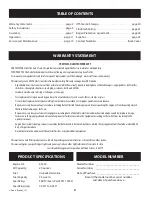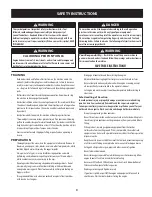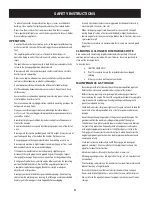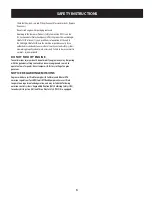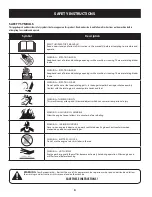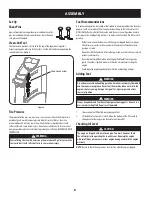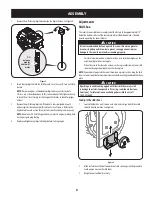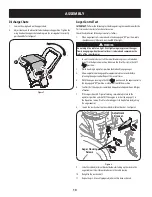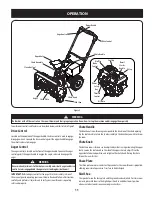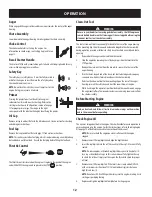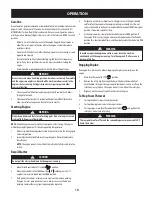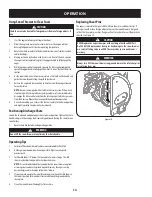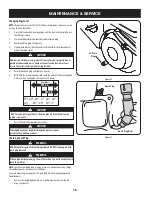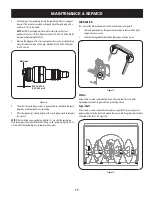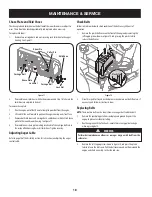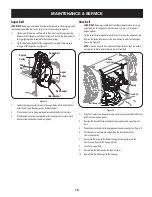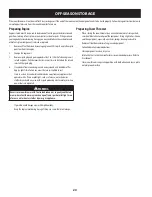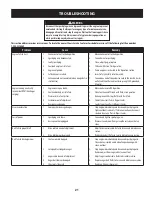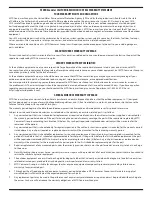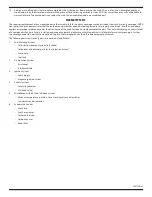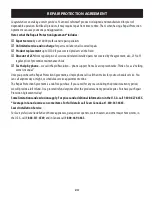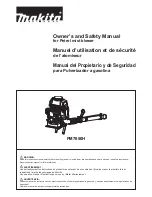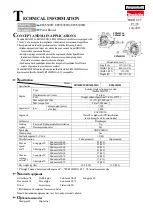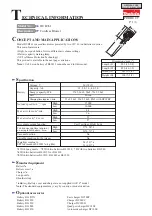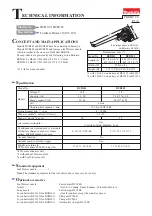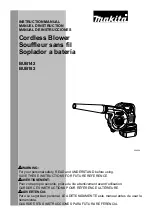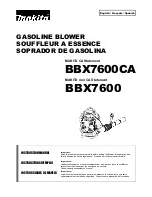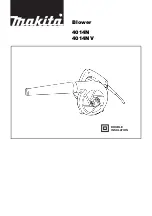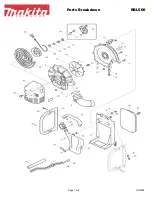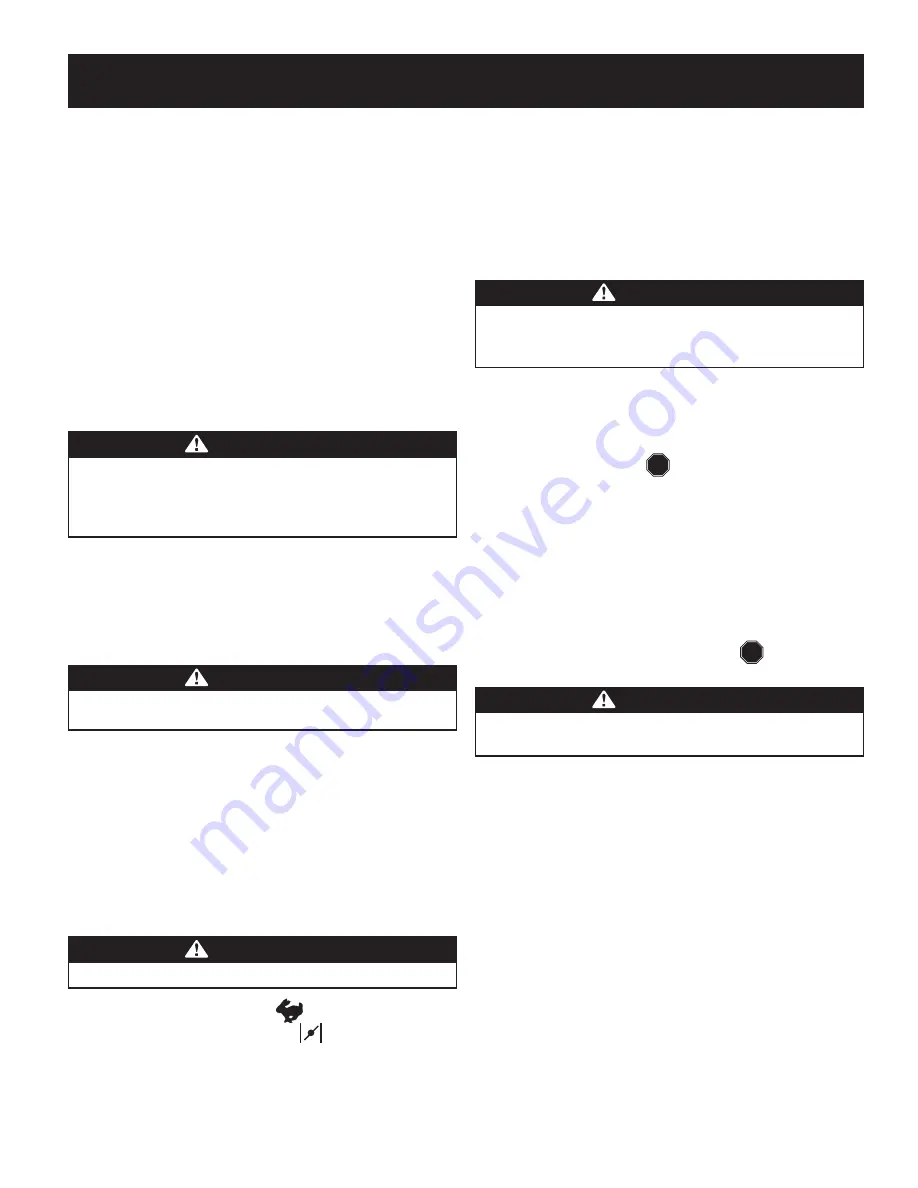
13
OPERATION
Gasoline
Use automotive gasoline (unleaded or low leaded to minimize combustion chamber
deposits) with a minimum of 87 octane. Gasoline with up to 10% ethanol or 15%
MTBE (Methyl Tertiary Butyl Ether) can be used. Never use an oil/gasoline mixture
or dirty gasoline. Avoid getting dirt, dust, or water in the fuel tank. DO NOT use E85
gasoline.
•
Refuel in a well-ventilated area with the engine stopped. Do not smoke or
allow flames or sparks in the area where the engine is refueled or where
gasoline is stored.
•
Do not overfill the fuel tank. After refueling, make sure the tank cap is closed
properly and securely.
•
Be careful not to spill fuel when refueling. Spilled fuel or fuel vapor may
ignite. If any fuel is spilled, make sure the area is dry before starting the
engine.
•
Avoid repeated or prolonged contact with skin or breathing of vapor.
WARNING
Use extreme care when handling gasoline. Gasoline is extremely flammable
and the vapors are explosive. Never fuel the machine indoors or while the
engine is hot or running. Extinguish cigarettes, cigars, pipes and other
sources of ignition.
1.
Clean around fuel fill before removing cap to fuel to avoid dirt and debris
falling into fuel tank.
2.
Fill tank until fuel reaches 1⁄2 inch below the bottom of the filler neck to
allow space for fuel expansion. Be careful not to overfill.
Starting Engine
WARNING
Always keep hands and feet clear of moving parts. Do not use a pressurized
starting fluid. Vapors are flammable.
NOTE:
Allow the engine to warm up for a few minutes after starting. The engine
will not develop full power until it reaches operating temperatures.
1.
Make certain both the auger control and drive control are in the disengaged
(released) position.
2.
Insert safety key into slot. Make sure it snaps into place. Do not attempt to turn
the safety key.
NOTE:
The engine cannot start without the safety key fully inserted into the
switch.
Recoil Starter
CAUTION
Do not pull the starter handle while the engine is running.
1.
Move throttle control to FAST (rabbit)
position.
2.
Move choke control to the CHOKE position
(cold engine start). If
engine is warm, place choke control in RUN position.
3.
Push primer three times, making sure to cover vent hole when pushing.
If engine is warm, push primer only once. Always cover vent hole when
pushing. Cool weather may require priming to be repeated.
4.
Pull gently on the starter handle until it begins to resist, then pull quickly
and forcefully to overcome the compression. Engine should start. Do not
release the handle and allow it to snap back. Return rope SLOWLY to original
position. If required, repeat this step.
5.
As the engine warms, slowly rotate the choke control to RUN position. If
the engine falters, restart engine and run with choke control at half-choke
position for a short period of time, and then slowly rotate the choke into RUN
position.
WARNING
To avoid unsupervised engine operation, never leave the machine
unattended with the engine running. Turn the engine OFF after use and
remove safety key.
Stopping Engine
Run engine for a few minutes before stopping to help dry any moisture on the
engine.
1.
Move throttle control to STOP
STOP
position.
2.
Remove the safety key. Removing the key will reduce the possibility of
unauthorized starting of the engine while equipment is not in use. Keep the
safety key in a safe place. The engine cannot start without the safety key.
3.
Wipe any moisture away from the controls on the engine.
To Stop Snow Thrower
1.
To stop the wheels, release the drive control.
2.
To stop throwing snow, release the auger control.
3.
To stop engine, move throttle control lever to OFF
STOP
and pull out the
safety key. Do not turn safety key.
WARNING
The temperature of muffler and the surrounding areas may exceed 150º F.
Avoid these areas.


